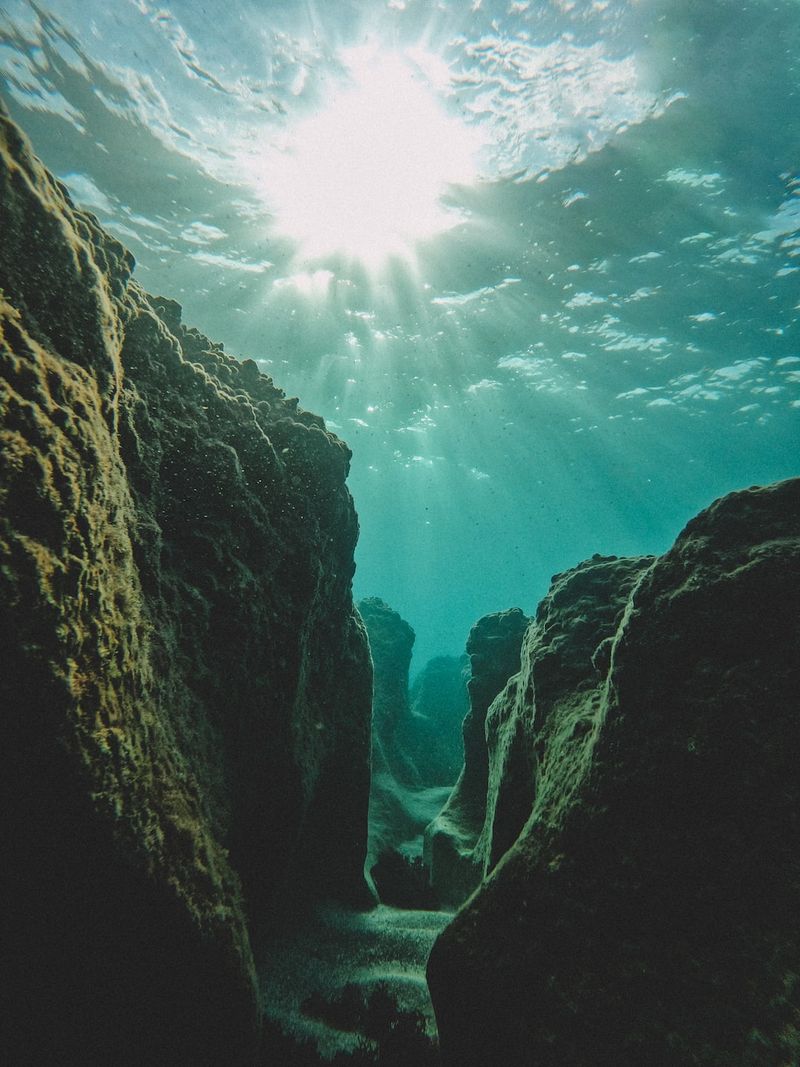The Catastrophic Implosion of the Titan Submersible
The Deadly Power of Water Pressure
The recent tragedy involving the Titan submersible operated by OceanGate Expeditions has brought attention to the immense power of water pressure in the depths of the ocean. At a depth of approximately 3,800 meters, where the remains of the Titanic lie, the water pressure is equivalent to about 400 atmospheres, nearly 6,000 pounds per square inch (psi). To put this into perspective, the force exerted by the bite of a large great white shark is around 4,000 psi, according to Scientific American.
In an implosion scenario, such as the one believed to have destroyed the Titan submersible, the hull collapses in on itself within milliseconds under the crushing weight of the water pressure. It is a catastrophic event that happens with incredible force and speed, leaving little to no chance of survival for the occupants of the pressurized chamber.
The Search for Answers
Understanding the exact cause of the implosion of the Titan submersible will be crucial not only to prevent future tragedies but also to advance our knowledge of deep-sea exploration. Roderick Smith, an engineering professor at Imperial College, London, has suggested that the accident was likely due to a failure of the pressure hull. However, a thorough investigation, including the recovery of debris, will be necessary to confirm the cause.
It is worth noting the challenges that investigators may face in determining the sequence of events leading to the implosion. The violence and speed of the implosion can make it difficult to piece together the chain of events accurately. Yet, the recovery of debris remains crucial in shedding light on the cause and preventing similar incidents in the future.
Safety Concerns and Lessons to Be Learned
The tragedy involving the Titan submersible has highlighted the importance of addressing safety concerns in deep-sea exploration. Prior to the accident, safety concerns had been raised, particularly regarding the submersible’s “experimental” carbon fiber hull. David Lochridge, OceanGate’s former director of marine operations, had warned about the potential risks associated with the hull material.
This incident serves as a wake-up call for the industry to prioritize safety in the design and construction of deep-sea exploration vessels. It is essential that rigorous testing, evaluation, and regular maintenance procedures are implemented to ensure the integrity and safety of such vessels. Open channels of communication between engineers, scientists, and operators are also vital in addressing and resolving any safety concerns that may arise.
Philosophical Reflections: Exploring the Perils of the Unknown
The catastrophic implosion of the Titan submersible invites us to reflect on the inherent risks and perils of exploring the unknown. Deep-sea exploration holds great potential for scientific discovery and understanding our planet’s history. However, it also confronts us with the vast and hostile environment that lies beneath the ocean’s surface.
As human beings, we possess an innate curiosity and desire to push the boundaries of knowledge. Yet, we must remember to balance our ambitions with an acute awareness of the dangers involved. The exploration of the ocean depths demands respect, meticulous planning, and a deep understanding of the forces at play.
In embracing this philosophical perspective, we can approach deep-sea exploration with a sense of humility and reverence for the mysteries that lie beneath the waves. By carefully managing the risks, investing in research and development, and prioritizing safety, we can continue to push the boundaries of knowledge while safeguarding the well-being of those involved.
Editorial: Prioritizing Safety in Deep-Sea Exploration
The tragic implosion of the Titan submersible is a stark reminder that safety must always be the utmost priority in deep-sea exploration. The incredible forces of nature experienced in the deep ocean demand the utmost respect and caution from those who venture into its depths.
The incident raises questions about the design, construction, and maintenance standards for deep-sea exploration vessels. It is imperative that regulatory bodies, research institutions, and private companies work collaboratively to establish comprehensive safety guidelines and protocols. These should include rigorous testing, materials inspections, and frequent maintenance checks to ensure the integrity and reliability of vessels operating at extreme depths.
Furthermore, the incident highlights the importance of a robust safety culture within the entire industry. Operators must foster a culture that encourages open dialogue, reporting of concerns, and continuous improvement. This means actively listening to and addressing the warnings and recommendations from experts and employees.
As we continue to explore the mysteries of the deep sea, it is essential that we learn from tragedies such as this one. Heightened safety standards and a commitment to comprehensive risk management strategies are paramount to ensure the well-being of those involved and minimize the chances of similar incidents in the future.
Advice: Proceed with Caution
For those involved in deep-sea exploration, it is crucial to approach each mission with a deep sense of respect and caution. Prioritize safety above all else and ensure that thorough risk assessments are conducted before embarking on any voyage. Engage with experienced engineers, scientists, and operators to gain insights into the potential dangers and safeguards required.
In addition, ongoing training and education should be a priority for all personnel involved in deep-sea exploration. Stay up to date with the latest advancements, safety regulations, and techniques to mitigate risks effectively. Regular safety drills and exercises should be conducted to prepare for emergencies and ensure everyone on board is equipped with the necessary knowledge and skills to respond effectively.
Ultimately, the ocean depths remain enigmatic and full of wonder. With proper precautions and a steadfast dedication to safety, we can continue to unlock its secrets while ensuring the well-being of those who dare to venture into its mysterious realm.

<< photo by Sean >>
The image is for illustrative purposes only and does not depict the actual situation.
You might want to read !
- A Deep Dive into the House Vote on Referring the Biden Impeachment Resolution to Committee
- The Evolution of “The Bear”: Season 2 Reveals Growth and Development
- Lost in the Depths: The Mysterious Disappearance of Stockton Rush ’84 in the Titan Submersible
- Underwater Disaster: Unveiling the Cataclysmic Implosion of the Titan Submersible
- “Confronting the Depths: A Journey of Fear and Discovery in Titan’s Submersible”
- The Rise and Fall of Stockton Rush: A Tragic Tale of Titan Submersible
- “Fact Check: Debunking the Claim that Titan Passenger Shahzada Dawood was the World…”
- Eastern Michigan’s Emoni Bates drafted by Cavaliers at No. 49: Is he the Next NBA Superstar or a Diamond in the Rough?
- Unveiling the Mysteries: The Titanic’s Deep Sea Graveyard
- The Moral Dilemma of “Win at Any Cost”: Examining Amen Thompson’s Reaction to Joining the Rockets in 2023
- Victory and Visions: Analyzing OKC’s Steal in the 2023 NBA Draft
- “The Future of the Court: Key Takeaways for Oklahoma City Fans from the NBA Draft 2023”




